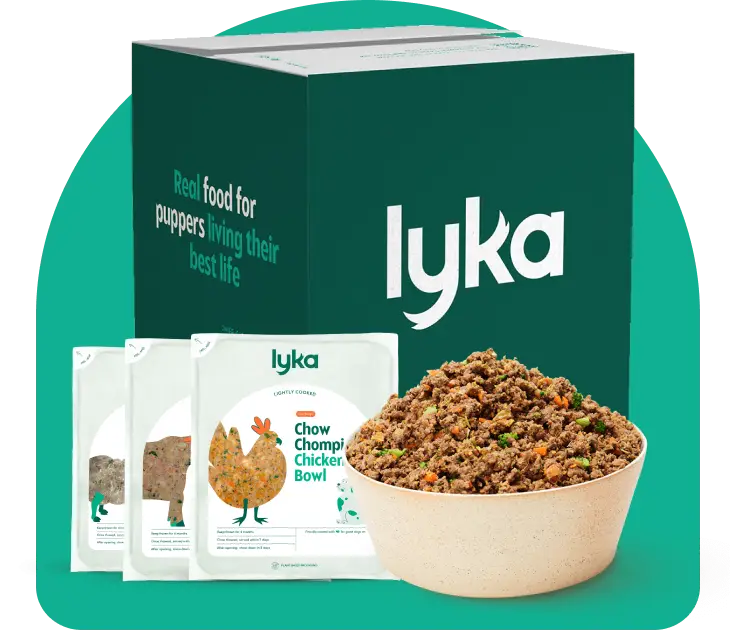Tasty treats are perfect for busting boredom, creating mindful moments, and rewarding good behaviour. But choosing the right ones can be tricky, especially when they aren't created equal.
This guide is for savvy pet parents who want to distinguish healthy treats from the ones that claim to be. Learn how to read treat labels like a pro, get to know what common ingredients mean, and we’ll even sniff out some treat-related myths.
Tracing treats (and their ingredients) back to their place of origin
The shorter and simpler the ingredient list on treat labels, the better. If you spot an ingredient you can’t pronounce, there’s a good chance it doesn’t need to be there.
Companies looking to cut costs manufacture their products overseas, using ingredients from a global supply chain.
Companies proud of their quality use local produce with no chemicals or preservatives, adhering to higher manufacturing standards.
On treat labels, look for the following to determine the product’s origin:
Ingredients sourced in Australia — these are denser in nutrients because of soil quality, plenty of sunshine, clean water, and regulated pesticide use.
Made in ***. This tells you where the product has been produced.
Human-grade ingredients mean they’ve been tested for pathogens, and are fit for human consumption.
“With chicken” means the product only needs to contain at least 3% chicken. The same applies to any kind of protein.
How to spot ingredients to avoid
Certain ingredients are common, but this doesn’t mean they’re safe for your dog. These can include:
Synthetics like ethoxyquin, propylene glycol, BHA/BHT, TBHQ, and sodium metabisulphite.
High glycaemic index carbohydrates like wheat gluten, soybean meal, corn bran, corn gluten, modified corn starch, rice bran, and cereal by-products. Soybean, oat, cottonseed, rice, and peanut hulls also fall into this category.
Refined and artificial sugars like corn syrup, fructose, malt extract, and white sugar. Excess sugar will spike your pup’s blood sugar levels, and comes with greater risk of obesity, diabetes, tooth decay, and heart disease.
Additives like artificial flavours, colours, preservatives, vitamins, and minerals are added when treats are cooked at a high temperature, as processing causes ingredients to lose their natural nutritional value.
Meat meal (also known as animal by-products) are all the parts of the animal that aren’t fit for human consumption. The final product after rendering — a dry meal — is made from skin, hair, stomach contents, fatty tissue, and organs, and can include 4D meat (from Dead, Dying, Diseased or Down animals).
Busting common dog treat myths
Myth 1: all dog treats are healthy
Treats high in fat, sugar, salt, or additives can be unhealthy for pups, especially if fed in large quantities. Too much sodium, for example, has been linked to chronic health issues in dogs.
Some parents choose to give dental chews or training treats daily: if this is you, it’s worth checking the nutritional information to avoid long-term health issues.
Myth 2: all human food is safe as treats
We’re passionate about the benefits of real food for dogs at Lyka — but safety always comes first. As a rule of thumb, avoid feeding dogs table scraps as treats: many of our favourite foods are toxic for our furry friends. Onions, garlic, chocolate, and xylitol (found in sugar-free gum and candies) are a few examples of ingredients that can cause harm to dogs, so it's worth taking the time to educate yourself on foods that are safe to feed in small amounts.
)
Myth 3: rawhide is a great chewable treat
This popular treat can lead to choking, blockages in the digestive tract, and contamination. Instead, opt for rubber or nylon chew toys — these are much safer, and specially designed for dogs.
Myth 4: all-natural or organic treats are automatically better
The terms “natural” or “organic” can be misleading. While organic treats avoid synthetic pesticides and fertilisers, they can still be high in calories or lack nutritional balance. The word “natural” is broader and not strictly regulated: it doesn’t guarantee the treat is healthy for your dog.
Instead of relying on these terms, go straight to the ingredients list.
Lyka treats — made with integrity, from ingredients you can trust
Lyka's single-protein treats are air-dried with no nasties in sight. This process helps maintain the nutritional value and tastiness of our ingredients, so your pup gets the most out of each bite.
Our treats come in a variety of options to suit different tastes and health needs, ideal for training, dental health, or rewarding your pup. We adhere to strict food safety and quality standards, using human-grade proteins ethically sourced in Australia.
Lyka pups love our droolworthy treats — cue the happy treats dance! Just remember to limit them to 10% of your dog's daily caloric intake.
)
)

)
)
)
)
)
)
